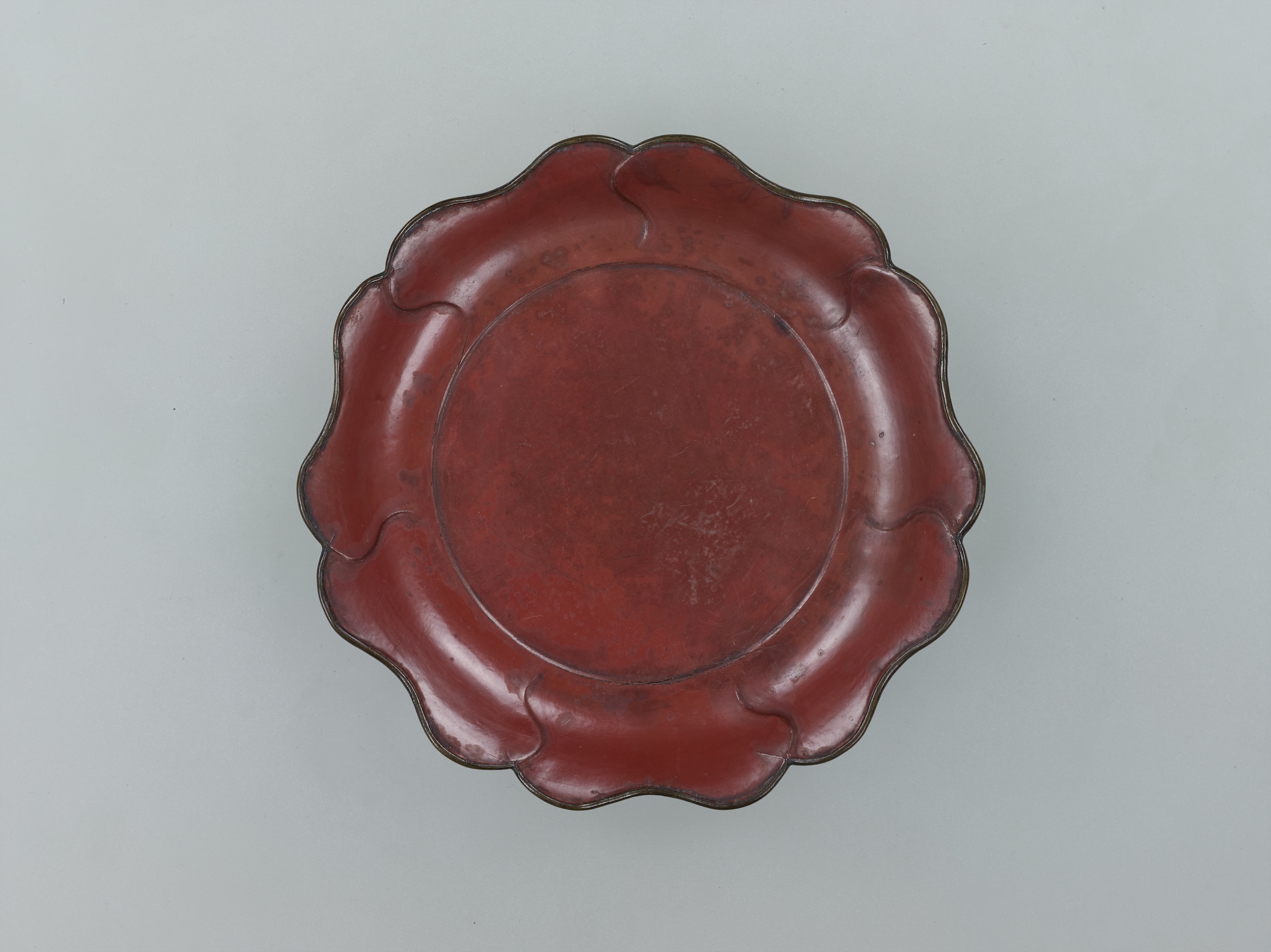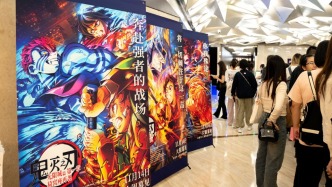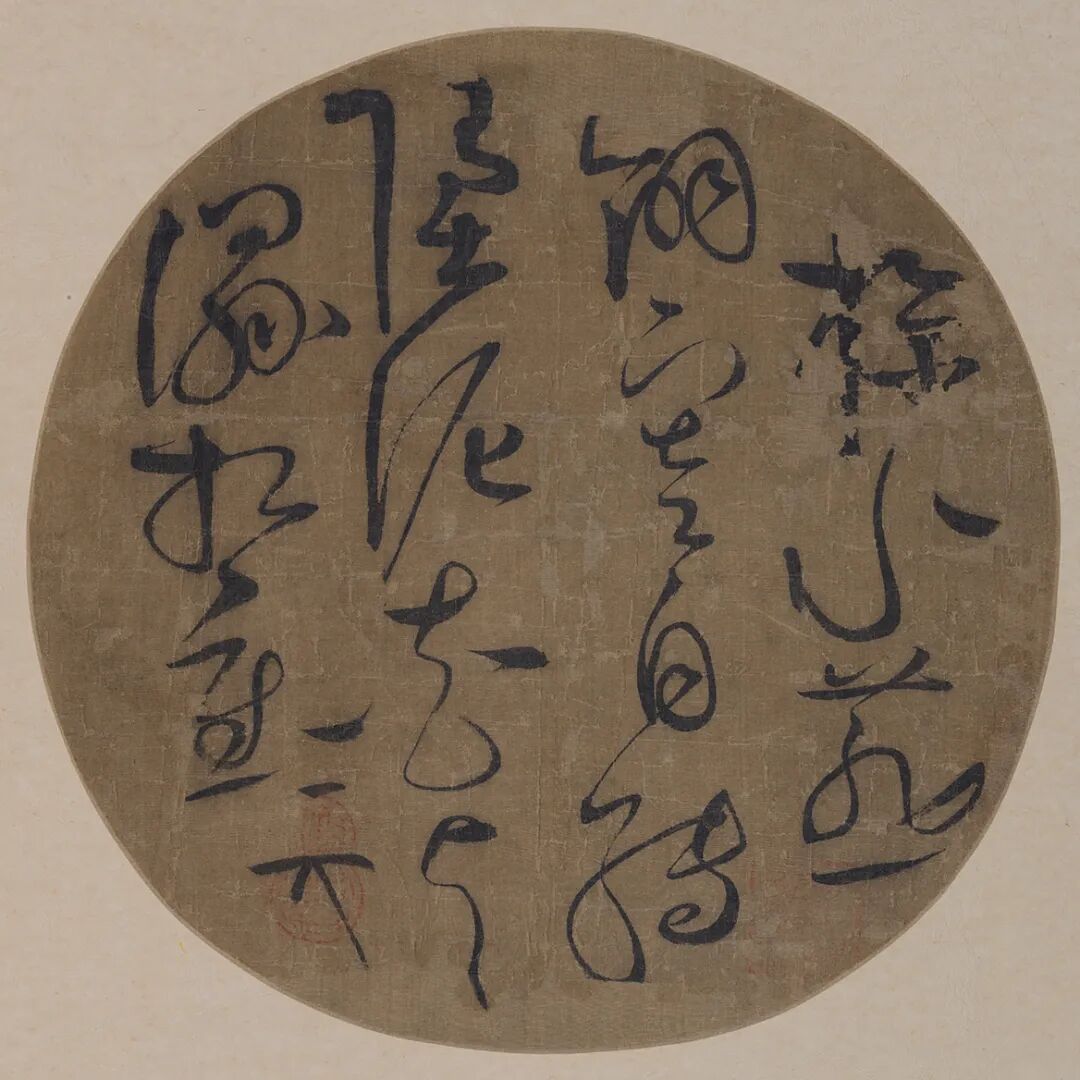
China is one of the earliest countries in the world to use lacquerware, and its long-standing lacquerware craftsmanship and culture have also spread to and influenced neighboring Japan. Japan still preserves numerous rare Chinese lacquerware pieces from the Song and Yuan dynasties. The "Red and Green Compete for Beauty: Treasures of Lacquerware from the Song, Yuan, and Ming Dynasties" exhibition, currently on display at the Shanghai Museum, is a rare and comprehensive showcase of Chinese lacquerware from the Song, Yuan, and Ming dynasties in Japanese collections. Of the 127 exhibits, 112 are from Japan, primarily from the collection of the Tokyo National Museum, bringing together Chinese lacquerware from temples, museums, and art galleries across Japan.
According to experts in the field of Chinese lacquerware, in addition to the unearthed early lacquerware, the lacquerware preserved in China from the Ming and Qing dynasties are mainly collected in the National Palace Museum on both sides of the Taiwan Strait and a few museums. However, Japan has preserved a large number of Chinese lacquerware treasures from the Song and Yuan dynasties, which became models for their later lacquerware craftsmanship to imitate and emulate.
The Chinese lacquerware that remains in Japan was brought to Japan by Tang Dynasty envoys, as well as through Sino-Song trade and imports from Song Dynasty monks. According to Yasuhiro Nishioka, curator of the Taicang Shukokan Museum of Art and special researcher at the Shanghai Museum, Japan has become a rare treasure trove of Chinese lacquerware for two reasons: first, the Japanese have always admired these imported Chinese goods, known as "Tang objects," and have cherished and protected them with great care; second, lacquerware was used extensively in Japan, from ceremonial objects at shrines and temples, to ornaments in shrines for samurai and nobles, and even as utensils for various arts such as tea ceremony, incense, and flower arrangement, and even as an essential item for everyday use.
Red lacquer sunflower-shaped plate
Plain lacquerware, characterized by its simplicity and elegance, is the longest-standing type of lacquerware. Undecorated, plain lacquerware is painted in a single or two-tone lacquer, typically in colors such as vermilion, black, brown, gold, and yellow. Red and black are the most prevalent and have been used the longest. This exhibition features a 13th-century Southern Song Dynasty "Red Lacquer Sunflower-shaped Plate" from the Tokyo National Museum. The plate is plainly painted in vermilion lacquer, with a brown base. The plate features a square-shaped monogram in the center, with the inscription "Youmei" in regular script inside. This elegant shape, similar to that found in Ding and Ru kiln porcelains of the same period, exemplifies the Song dynasty's aesthetic preference for simplicity.

Red lacquer sunflower-shaped plate, Tokyo National Museum, Southern Song Dynasty, 13th century

Red lacquer sunflower-shaped plate, Tokyo National Museum, Southern Song Dynasty, 13th century
Black carved round box with cloud and dragon pattern
Black carving was a common lacquer technique during the Song Dynasty. This round box has a wooden base entirely coated in a dark brown lacquer. The lid is painted with a combination of yellow, red, and black lacquer. The dark brown surface features a pair of three-clawed dragons carved into the wood, depicting them as they travel through clouds. Their scaleless, S-shaped bodies are outlined with slender lines, their backs sculpted with plump arms and shoulders, and their limbs muscular, creating a dynamic presence. The cloud pattern on the lid connects to the wall, forming a shoulder-like pattern. The dragons and cloud patterns are outlined with red lacquer.
The Chilong is a legendary auspicious beast, belonging to the mythical creature of the dragon family. The people regard it as an imaginary auspicious image. The Chilong pattern originated from the high-standard bronze ritual vessels of the Shang and Zhou dynasties. The "Chi" in the Song Dynasty refers to a pattern with auspicious meanings. It inherited the tradition of the Tang Dynasty and innovated a unique style, reflecting the revival of patterns brought about by the development of retroism and epigraphy in the Song Dynasty. It is mainly used for decoration of jade and porcelain, with single, double, and triple Chi, symbolizing "hoping for a son to become a dragon" and "three talents".

Black carved round box with dragon and cloud pattern, Southern Song Dynasty, 13th century, diameter 21.8 cm, height 6.7 cm, collection of Tokyo National Museum
A round plate with black carved figures in pavilions
This round plate is made of wood, painted with a dark brown lacquer throughout. It is decorated throughout with black incised patterns. The central motif depicts children playing in a pavilion courtyard. This type of childish play is commonly known as a "children's play picture." This round plate features children playing in front of a pavilion shaded by trees: some are cockfighting, some are playing with rattles, some are watching chickens and dogs squabbling, and some are watching over young children. A full moon hangs in the upper right corner of the pavilion, and within it is a jade rabbit pounding medicine beneath a sweet-scented osmanthus tree. This depicts the arrival of the jade rabbit and the joyful reunion of children on Mid-Autumn Festival night. It symbolizes harmony between heaven and man, and a fulfilling life.
Song Dynasty paintings of children at play are rich in content, encompassing diverse themes such as urban life, festive occasions, and children's sports. Vivid depictions of children's lively gestures and innocent expressions, as well as scenes of playful activities like kicking a ball (cuju) and grinding dates, showcase the innocence and joy of children, conveying a relaxed and joyful atmosphere. These paintings embody people's hopes for family growth and a happy life, embodying auspicious meanings such as "hundreds of sons and grandsons" and "five sons passing the imperial examinations." These paintings embody the unique social and cultural customs of the Song Dynasty.

A round plate with a black carved figure in a pavilion, Southern Song Dynasty, 12th-13th century, from the collection of the Tokyo National Museum.
This plate has a thin lacquer layer, and is decorated both inside and outside with roses, camellias, chrysanthemums, peonies, hibiscus, gardenias, and other flowers. The floral depiction is not yet stylized, suggesting it represents an early example of this type of work.
Red lacquer rectangular box with phoenix and peony patterns
Lacquer carving is the art of carving patterns into repeatedly applied layers of red lacquer. Because each coat is only a few microns thick and the second layer must be dried before the next one can be applied, carving lacquer is a costly, time-consuming, and paint-intensive craft.

A rectangular box with red lacquer and phoenix and peony patterns, Southern Song Dynasty, 13th century, from the collection of Tokyo National Museum
This rectangular box with peony and phoenix motifs is carved using the lacquer technique. The outer wall of the box is first coated with a yellow lacquer base, then painted with a vibrant red. The pattern is then carved after a certain thickness. The inner wall is painted with black lacquer. The phoenix on the lid is graceful and elegant. A pair of phoenixes face each other, weaving through a field of lotus, chrysanthemum, camellia, gardenia, and rose. The flowers on the lid extend to the wall in a continuous shoulder pattern. Narcissus, peonies, chrysanthemums, and other flowers are adorned around the body of the box.
The decorative patterns are sparsely arranged, the yellow lacquer background clearly visible, the hidden edges distinct, the rising and falling edges smooth, and the delicate and exquisite craftsmanship. The rectangular box's lid bears a needle-engraved inscription: "Made by Lü Pu, Hongfu Bridge." Hongfu Bridge was the name of a bridge in Hangzhou during the Southern Song Dynasty, renamed Hongqiao in the Yuan Dynasty. Therefore, these two boxes are likely Song Dynasty lacquerware.
Scripture box with gold-inlaid phoenix pattern
This rectangular, gabled wooden casket is painted black on the exterior and red on the interior, with inlaid green shells along the rim and corners. The casket is black on the exterior and red on the interior. It is decorated throughout with inlaid gold: the lid is adorned with twin phoenixes, two peacocks on one long side, two parrots on one short side, and four monks clasping their hands together amidst clouds on the other short side. The characters "Wu Zhen" are inscribed on one short side of the lid, and "Er Zhou" on the other short side of the casket. This is the only extant inlaid gold sutra casket decorated with these four monks, a truly unique piece.

Gold-Inlaid Phoenix-Decorated Sutra Envelope (Nara), Important Cultural Property, 14th century, Collection of the Nara National Museum
Black lacquer mother-of-pearl diamond-shaped plate with sea dragon pattern
Mother-of-pearl is a decorative technique that inlays the pearly inner shells onto the surface of objects. Combining the gentle sheen of lacquer with the vibrant shimmer of mother-of-pearl, Chinese mother-of-pearl gradually gained popularity in neighboring countries.
This plate is constructed of wood in the shape of an eight-petal diamond flower, with a free-form ring foot. It is lacquered entirely in black lacquer, with mother-of-pearl in various shades used to create decorative patterns. The rim is decorated with mother-of-pearl floral motifs. The center of the plate features a mother-of-pearl depiction of a massive, five-clawed dragon surging through the waves. Its head, covered in bluish-white, red, and green shell fragments, represents its eyes and jaws. Its body, covered in green scales and red fins, chases a flaming pearl amidst the surging waves. The background is adorned with finely colored shells, depicting cloud patterns, rocks, and trees. The delicate shell fragments, particularly the silky strands, represent the rolling waves, highlighting the dragon's majestic form.

Black lacquer mother-of-pearl diamond-shaped plate with sea dragon pattern, Important Cultural Property, 14th century, Collection of Tokyo National Museum
This plate has a thin body, sharp diamond-shaped petals, and exquisite mother-of-pearl craftsmanship. It can be regarded as a masterpiece of thin mother-of-pearl inlay in the Yuan Dynasty and is famous throughout the world.
A round fan with a heart-shaped handle and cirrus pattern
The fan features a wooden frame and bamboo frame, an oval blade, and a long handle. The blade is made of bamboo strips, supported by a crescent-shaped support. The surface is plain, mounted with paper and lacquered with persimmon syrup. The handle is a thin wooden shaft, slightly thicker in the middle and tapering at the ends, resembling an olive. The handle is crafted using a combination of cast iron and rhinoceros horn carving techniques. The shaft is coated with a 5mm thick interlaced red and black lacquer, and is inscribed with a heart-shaped cirrus pattern using rhinoceros horn carving. The blade's edge reveals hair-thin lines that flow like flowing clouds. The area outside the heart-shaped cirrus pattern is removed, creating an openwork effect. The characters "Jun Yu" are inscribed on the top of the handle, possibly the pen name of the tomb owner, Zhou Yu.

A round fan with a heart-shaped handle and a scroll cloud pattern, carved from rhinoceros horn. Southern Song Dynasty (1127-1279). Excavated from the Southern Song Dynasty tomb of Zhou Yu in Maolu Commune, Jintan City, Jiangsu Province in 1975. Collection of Zhenjiang Museum.
This fan is beautifully shaped, exquisitely crafted, and well-preserved. The heart-shaped, cloud-shaped pattern carved from rhinoceros horn is particularly striking, allowing it to rotate freely around the fan shaft. It can be said to be the pinnacle of Song Dynasty rhinoceros horn carving craftsmanship.
Red lacquer lotus leaf shaped pillow

Red lacquer lotus leaf-shaped pillow, Northern Song Dynasty ( 960-1127 ), unearthed from M2:1, Bashi Town, Xishan District, Wuxi City, in the collection of Wuxi Cultural Relics and Archaeology Institute.
Its shape is unique, with lotus leaf-like shapes on both top and bottom. The pillow has a flat, seven-petal lotus leaf, while the base is five-petal. It is lacquered throughout with red lacquer, which still retains its lustrous finish. A red lacquer inscription, "Yi Si Zhong Ma Shang Lao," is found near the base of the central petal on the upper part of the pillow. This inscription is covered with a layer of lacquer and is only visible when the surface is wet. This is because the inscription is covered with a layer of lacquer. This phenomenon is not recorded in historical records, and only three pieces with "hidden inscriptions" have been unearthed so far. Therefore, the hidden inscription may have occurred because the owner, for aesthetic reasons, had the craftsman cover the inscription with lacquer after purchase. With the advancement of archaeological technology, the excavation and study of more lacquerware with hidden inscriptions will surely reveal the true reason.
Fragment of a lid with a red lacquer seal and a carved vine and cloud pattern
This fragment is an irregular trapezoid, likely a hexagonal or octagonal lacquerware lid fragment. The front is painted red, with three circular arcs carved into the ground. The inner area features a continuous pattern of creeping grass and clouds, while the outer area is carved with a pattern of winding grass. Surrounding the grass pattern is a brocade ground composed of dense vertical lines, which is flush with the decorative pattern, creating a visual impression similar to a carved block.

A fragment of a lid with a carved red seal and a motif of creeping grass and clouds, Southern Song Dynasty (1127-1279), 16.1 cm long and 3.7 cm wide, unearthed at the Sanbanqiao construction site in Wenzhou in 2008.
The tenth chapter of the Kunji Carving in the "髹饰錄" says, "Tick-red is the carving of red lacquer. ... Many Tang Dynasty printing plates were carved with a flat brocade red color. The carving method is simple and ancient, which is admirable." So how do we pronounce the seven characters "printing plates carved with a flat brocade red color"?
Mr. Wang Shixiang believes: "According to the text and Yang's annotations, we know that there are two types of brocade: "flat brocade red" and "sunken ground yellow brocade." Therefore, the four characters "flat brocade red" should be read together, meaning a red brocade ground that is level with the pattern. Because there is no difference in height between the pattern and the ground, it is similar to the printing plate of a woodblock book. Many Tang Dynasty lacquer carvings have the same color for both the pattern and the ground, with no difference in height, which shows that it was still in its early stages, consistent with the fact that the lacquer carving technique began to become popular." This fragment, which preserves the Tang Dynasty "printing plate engraving flat brocade red" technique, fully proves that Mr. Wang Shixiang's view of the four characters "flat brocade red" being read together is correct. This shows that the Tang Dynasty lacquer carving technique continued into the Song Dynasty.
(This article is compiled based on relevant graphic materials from the Shanghai Museum)


